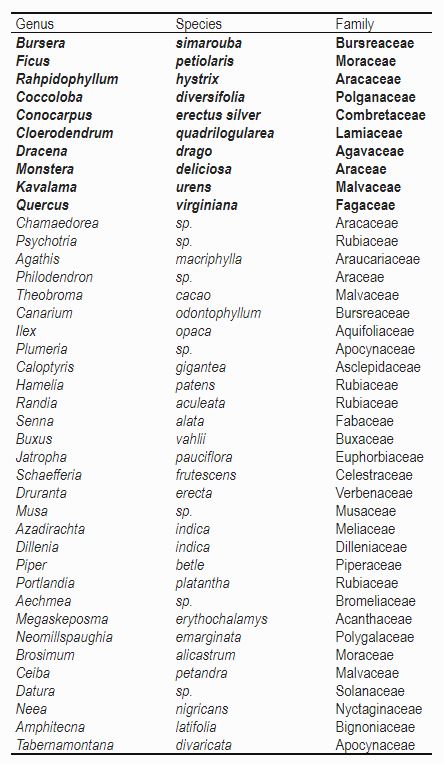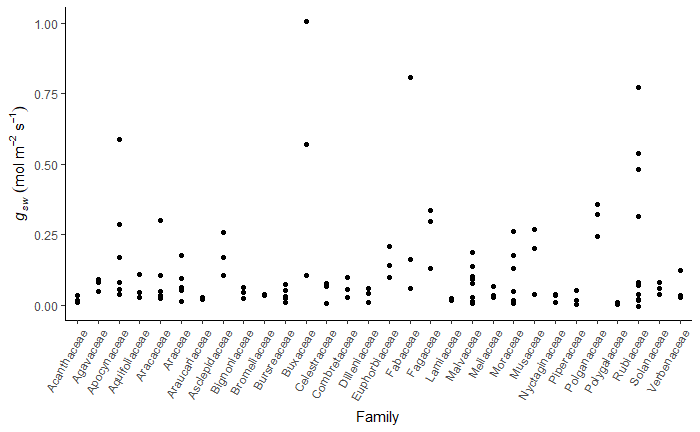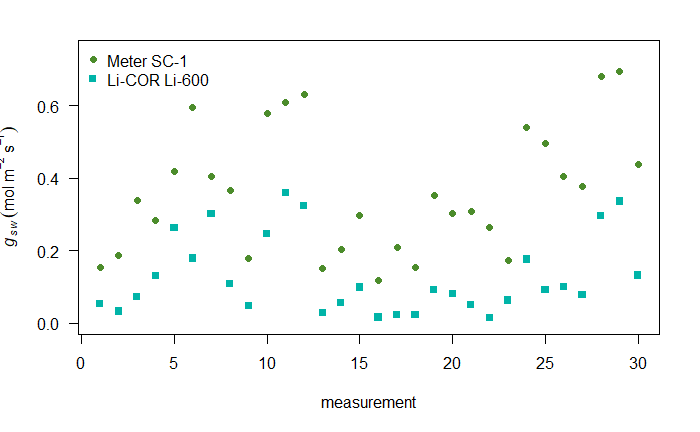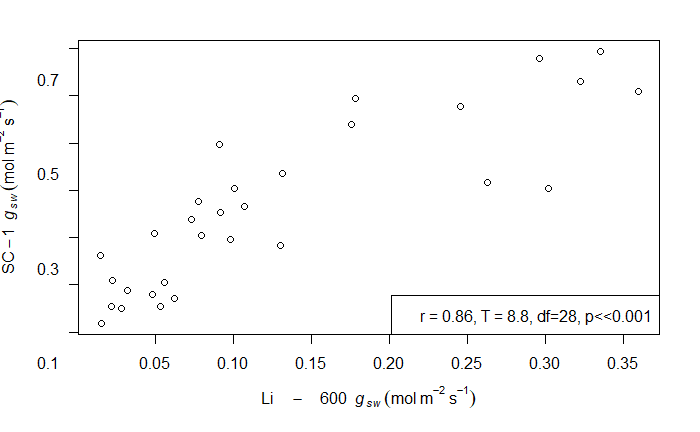|
If you're in academia or science, you're probably like me - with an excessive number of tasks to complete. Maybe you have that pesky manuscript review that is two weeks overdue for a journal that is just outside your area of expertise. Perhaps, you have a manuscript of your own in the final stages of peer review, where Reviewer 2 has entrenched you into an editorial battle over some minor methodological criticism, which is seemingly tangential to the main message of the paper. Or maybe you have 60 midterms to grade from the two sections of GEN BIO II Lab, which you are teaching this semester. Additionally, it's highly likely you have have a dataset (or two, or three) that needs analyzing; and just maybe, this COVID-19 work from home has you filling out all the random surveys that come to your inbox with the impossible hope of winning a 100$ Amazon Gift Card.
Whatever the case may be, again - only if you're like me, when the opportunity arises to test the newest piece of equipment from Li-COR, you don't say no. In fact, all of the abovelisted things were true for me, when I agreed to test the Li-600 porometer from Li-COR, an opportunity which presented itself because one afternoon, half bored, I filled out Li-COR's request for testers (not thinking they would actually send me an instrument - in academia, #rejectionistherule). It's effortless for one's imagination to go wild with the possibilities of what one might do if given a piece of new equipment for a week. Of course, when this happens, it seemingly happens in a vacuum, where all other responsibilities are immediately forgotten. Thus, you can imagine how my advisor was hesitant when he heard that I would be testing the instrument. "Aren't you spread a bit thin?" "how about that dataset?" "or those revisions". I could only think to myself... "yeah, what about them?", having faith that it will all work out (for better or for worse, I guess). In the meantime, all I could think about was going #physing. Any excuse to do a little fieldwork would do... and here was the perfect opportunity. So, there's the back story. The Li-600 arrived at my house on Friday, October 22, and I had one week to use it. What did I do? First, I asked around to see if anyone else was interested in this instrument. Ken Feeley from UM mentioned that it would be interesting to compare it to the SC-1 porometer that they use in his lab; and, with the help of Catherine Bravo, that's what we did.
Video 1: My first impressions upon unboxing the Li-600.
MESUREMENTS
In the afternoon (from about 3:00-5:00 PM) of Saturday, October 17th, Catherine and I measured stomatal conductance (gsw) of 120 leaves at Fairchild Tropical Botanical Garden. We measured 3 leaves per tree of 40 tree species (see the species list below in Table 1). Overall, gsw values were low (see Fig. 1), likely becuase we measured leaves in the midday heat. I took some morning measurements on the morning of October 22nd, 2020, at FIU and recorded higher conductance values (data not shown here). We found the Li-600 was easy to use and user friendly. The design and software worked well together. All one has to do in between measurements is 1) tell the instrument that you are going to go to a new leaf (select new leaf using the arrows and button on the control pad), and then clamp onto the leaf. The instrument knows when a leaf enters the aperture becuase it seals the chamber and directs the airflow into the reference relative humidity (RH) sensor. Once that happens, the machine immediately begins to look for stability based on the stability criteria set by the user (there are three settings based on the stringency you would like in terms of the slope of the difference in RH between the two RH sensors and some other parameters). Once stability is reached, the fluorometer flashes, and you are good to go—select new leaf using the controls and clamp to the next leaf (see Video 2). I had used the SC-1 a time or two before, when helping my friend, Tim Perez take some measurements. It's a reliable instrument that has been around for at least a decade. When taking measurements on October 17th with Catherine, the device was much slower than the Li-600, although it was still pretty fast considering being able to record an observation every minute or so (compared to several seconds). Recall the nature of ecophysiological measurements - where several decades ago, one would have to place plastic bags over leaves, have a camper-trailer with a generator and power cords and gas lines running all over the place, or collect gases for analysis by IRGAs in labs far away. The noticeable primary difference between taking measurements with the SC-1 and the Li-600 was measurement speed becuase with the SC-1, sometimes one has to shake the instrument and wait. This is because the SC-1 is a diffusion porometer, and depending on the humidity of the air, especially at high humidity, humid air can enter into the diffusion path of the instrument, which needs to be dried. There is an agitation bead inside the instrument, between the leaf aperture and the diffusion path (which leads to the RH sensor), which helps mix the air. Opposite the leaf aperture is a small among of desiccant which can dry the air inside the instrument by shaking the instrument. In the operating software of the device, there is a threshold (in our case, it was 10 mmols/m^2/s) which triggers the instrument to promt the user to shake it and dry the air. This happened consistently during our measruemnts. So, the main difference between the Li-600 and the SC-1 was measurment speed.
Video 2: Taking measurements with the Li-600
TABLES & GRAPHS
In Fig. 2, we compare the values for 30 leaves measured with both the Li-600 and SC-1 (3 leaves per species in correspondence to Table 1). The instruments were clamped onto the same leaf area of the same leaf, one after the other (first with the SC-1, then with the Li-600). The SC-1 porometer consistently measured greater gsw values than the Li-600. SC-1 gsw values were 0.23 mols/m^2/s greater, on average than the Li-600. This difference is likely explained by the inherent differences in the way the two instruments measure air humidity and then use those measurements to calculate gsw.
The SC-1, as described above, is a diffusion porometer with a single RH sensor. The Li-600, however, uses two RH sensors and a known flow rate of air over the abaxial (or lower) surface of the leaf. Thus, the humidity of the air has much less of an effect on the measurement becuase it is known and can be accounted for (i.e., leaf H2O is calculated as the difference in H2O between the two RH sensors, which is then used to estimate gsw using theory). The instruments were highly correlated in their measurements of gsw (Pearson's r = 0.86), meaning that they showed similar trends among leaves in their measured rates of gsw (Fig. 3). Another potential explanation for the discrepancy in the mesaurments could be sensor calibration for the SC-1. In regard to the Li-600, we did encounter several instances where the instrument was unable to measure gsw. In cases in which there is not a good seal between the bottom of the leaf aperture and the abaxial surface of the leaf (e.g., with needle-like leaves or with tiny leaves/leaflets), the instrument is unable to establish a proper flow between the two RH sensors and thus cannot take a reading. The leaf aperture measure 3/4 of a cm in diameter, so it is quite small; however, the inability to measure needle-like leaves might be an issue for some potential users. Admittedly, I am no expert in stomatal conductance, yet I know even less about chlorophyll fluorescence. Based upon my elementary evaluation, however, the Li-600 is outfitted with state-of-the-art fluorometry technology. It has two light sources that are angled toward the adaxial leaf surface, with the detector placed between them, just above the leaf surface. Measurements are always taken at ambient conditions, making acclimation to light a non-issue, and the instrument can be used at night for dark-adapted measurements (where you could also measure nighttime gsw). The steady-state (Fs) measurement is taken using a modulated light beam, which helps filter out noise in the Fs signal. The default fluorometer pulse is 1000 umols/mol, which is rapidly becoming the standard (according to my knowledge). In my estimation, all the fluorometer theory and application that comes with the Li-6800 has been streamlined and refined for the 600. Additionally, the 600 has a small, strategically placed PAR sensor toward the front of the instrument just above the leaf aperture, which measures the light conditions at the instant of fluorescence measurements. Combine all of this with the high-tech infrared thermometer, which measures leaf temperature (from the underside of the leaf), and you can get a lot of high-quality data about leaf water and light use. Such data can readily complement more traditional gas-exchange data (e.g., A-Ci curves). All in all, my experience testing the Li-600 was positive. The instrument exceeded my expectations, which were already pretty high, based on word of mouth, etc. But, I have to say, in my estimation, this instrument lives up to the hype. The data and a literate statisical document showing the analyses are attached below:
CONCLUSION
I'm no Tom Buckley (see killer twitter thread on stomatal conductance below), but I think the Li-600 works! (and it works very well-my 2¢) ♠
DISCLAIMER: The author of this blog (J. Aaron Hogan) was not paid by Li-COR or anyone else for the content of this review. This review was done in the spirit of an independent test for the scientific community. #happyPhysing
Big Thanks to Li-COR (@LICOR_ENV), the Ken Feeley Lab (aka @junglebiology) at the University of Miami, and Catherine Bravo.
9 Comments
Kerrie Sendall
3/26/2021 09:19:40 am
Do you know the cost of LI-600? I have an SC-1, which I believe cost ~$3000, but don't know what the new Licor costs in comparison.
Reply
Aaron
3/30/2021 12:30:59 am
You can get a quote from Li-COR directly. But I think (rough ballpark) the basic porometer is about 6,000$ and the poro/flourometer is about double that. But don’t hold me to those numbers.
Reply
Jean-christophe Domec
8/31/2021 01:50:22 pm
Thanks for your blog/comments on the LI 600 very useful.
Reply
MICHELLE ESTEFANIA ZAVALA PAEZ
12/1/2021 08:33:44 pm
Hi I am new in plan to plant physiology.
Reply
Kevin
2/8/2024 07:41:48 am
There are two common sets of units to express conductance. There the units here are mol m^-2 s^-2 and as far as the math of it goes, the only limitation is that it must be greater than or equal to 0. Although there isn't anything in the math that limits the upper value, physically it will be limited by the diffusivity of the molecule you're examining, water in this example. Values greater than 1 mol m^-2 s^-1 are possible and fairly common.
Reply
Matt
1/29/2024 10:55:20 pm
https://www.frontiersin.org/articles/10.3389/fpls.2023.1325221/full?&utm_source=Email_to_authors_&utm_medium=Email&utm_content=T1_11.5e1_author&utm_campaign=Email_publication&field=&journalName=Frontiers_in_Plant_Science&id=1325221
Reply
Muzaffer İpek
7/15/2024 04:49:53 am
Hello,
Reply
Muzaffer İpek
7/15/2024 04:49:26 am
Hello,
Reply
Leave a Reply. |
AuthorJames "Aaron" Hogan is an ecologist interested in plant biodiversity, forests and global change. Archives
November 2021
Categories |
||||||||||||||







